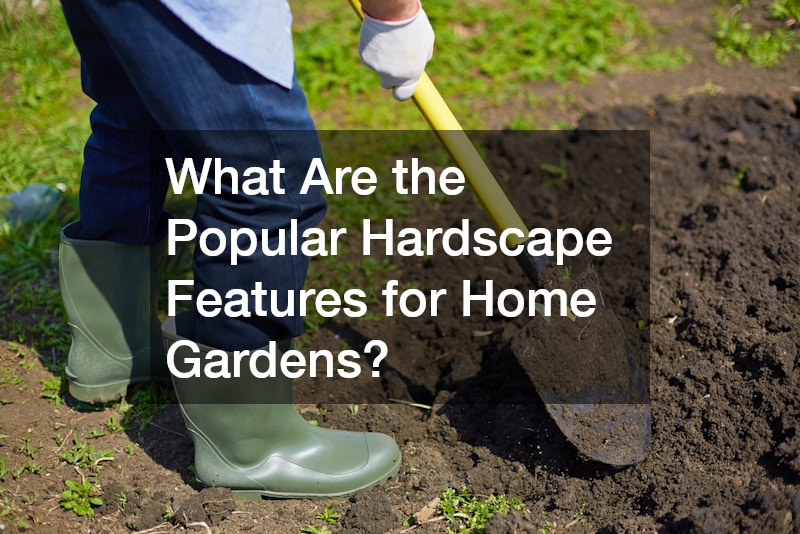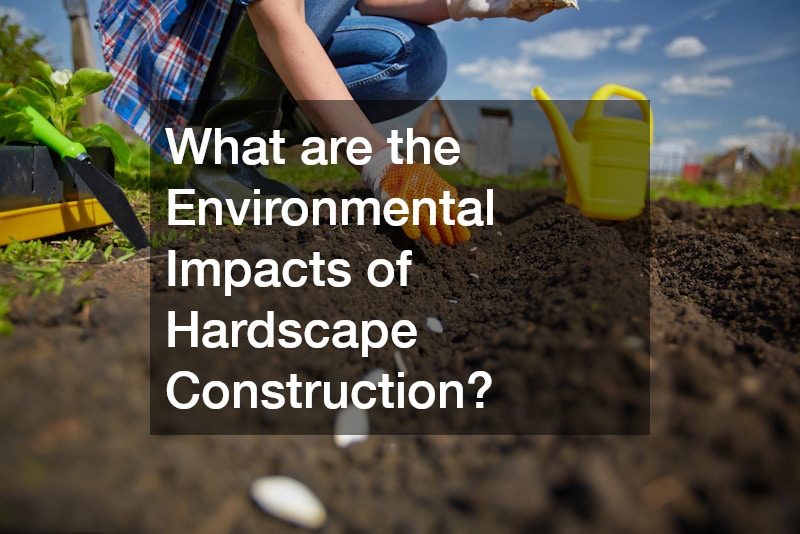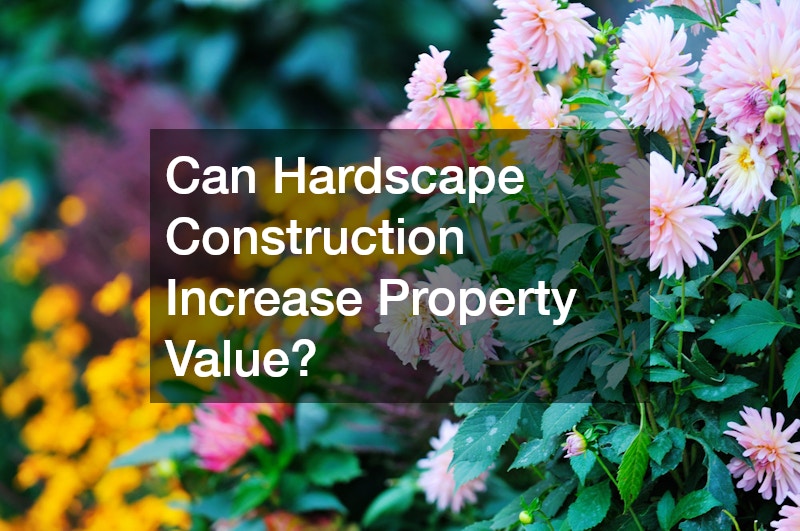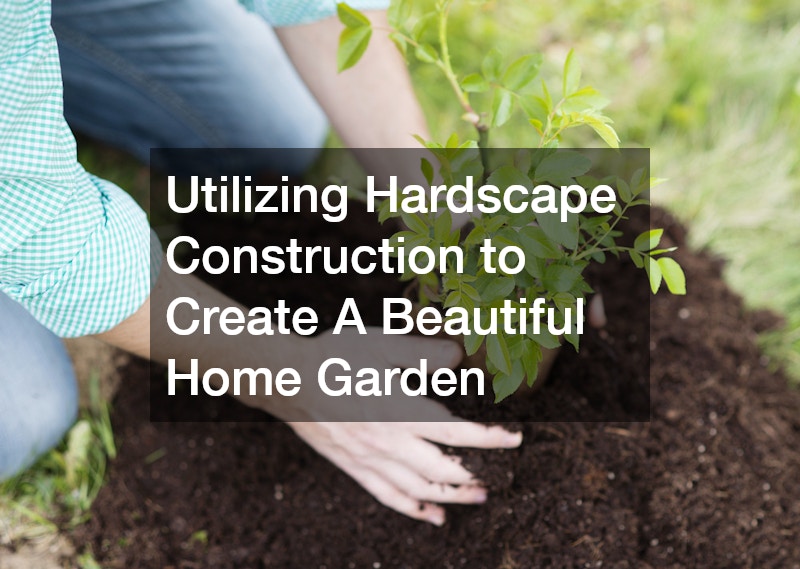Transforming a home garden into a visually striking and functional outdoor sanctuary involves more than just lush greenery and blooming flowers. One of the most impactful strategies to elevate a garden’s aesthetics and usability is through hardscape construction. Hardscaping involves the incorporation of non-living elements—such as stone, wood, concrete, and metal—into the landscape to add structure, organization, and architectural interest. When skillfully integrated, hardscape construction not only enhances beauty but also contributes to the long-term sustainability and value of the property.
Beyond the traditional features, today’s homeowners are expanding the potential of outdoor spaces by including custom fences, greenhouses, and professionally installed pavers. The integration of these elements, particularly when coordinated by a professional landscaping contractor, results in cohesive and vibrant outdoor environments tailored to lifestyle and climate.
What is Hardscape Construction and How Does it Benefit a Home Garden?

Defining Hardscape Construction
Hardscape construction refers to the design and installation of non-plant elements within a landscape. These elements include patios, walkways, retaining walls, pergolas, fountains, and other features made from durable materials. Unlike softscape components, which consist of plants, shrubs, and trees, hardscape provides form and function, creating a stable foundation for outdoor spaces.
Homeowners often work with a hardscaping service to ensure structural soundness and aesthetic appeal. These professionals use a variety of materials and techniques tailored to the terrain, often in collaboration with a local excavation company to prepare the site.
Core Elements of Hardscape
Hardscape typically involves materials such as natural stone, concrete, pavers, bricks, wood, and metal. These elements are used to build structures that define space, support elevation changes, and guide movement throughout the garden. Core hardscape components include borders, seating areas, driveways, garden paths, and structural supports.
Adding a well-designed fence can further define boundaries and contribute to the overall safety and privacy of the garden, especially when it complements other hardscape elements.
Benefits of Integrating Hardscapes
Integrating hardscape into a garden offers a multitude of benefits. It adds year-round visual interest and usability, reduces maintenance compared to softscape elements, improves property drainage, and enhances safety through defined pathways and boundaries. Hardscapes can also extend living space outdoors, creating areas for relaxation, entertainment, and dining.
When features like a retaining wall are constructed correctly, they can also help with slope management and erosion control, protecting both the structure and surrounding plant life.
Hardscapes vs. Softscapes: Key Differences
Hardscapes are permanent or semi-permanent and are typically constructed from inert materials. In contrast, softscapes are living, dynamic elements that change with seasons and require ongoing care. While softscapes bring life and color, hardscapes provide structure and durability. A balanced blend of both is essential for a holistic and functional landscape design.
Integrating soft elements like garden topsoil or flower beds from local plant nurseries around hardscape features creates visual harmony and supports thriving plant life.
Examples of Hardscape Structures
Examples of hardscape structures include flagstone patios, gravel walkways, stone retaining walls, concrete fire pits, metal trellises, wooden pergolas, and decorative fences. Each serves a unique purpose and contributes to the overall theme and functionality of the garden, whether rustic, modern, or traditional.
The addition of a greenhouse, integrated with surrounding hardscape pathways and seating, provides both utility and charm—allowing gardeners to extend their growing seasons and protect delicate plants.
How to Plan Hardscape Construction in Your Garden?
Assessing Your Garden’s Needs
Effective planning begins with assessing your garden’s current state and identifying areas that need improvement. Consider how you use your outdoor space and what challenges—such as poor drainage, limited seating, or uneven terrain, you aim to address.
If the garden is experiencing water pooling or patchy growth, it might be beneficial to incorporate lawn irrigation services during the planning process to ensure the new hardscape integrates seamlessly with a healthy landscape.
Designing a Layout
Once needs are assessed, design a layout that maximizes space, flow, and function. Incorporate zones for dining, relaxation, and play, ensuring that pathways provide natural transitions between areas. Use sketches or landscape design software to visualize potential arrangements and refine them accordingly.
Work with a landscaping contractor to ensure your design adheres to local building codes and natural terrain limitations, especially for projects involving excavation or large structural components.
Choosing the Right Materials
Material selection plays a vital role in the longevity and aesthetics of hardscape elements. Natural stone offers timeless appeal, while concrete provides versatility and cost efficiency. Choose materials that complement your home’s exterior and withstand your regional climate conditions.
Pavers are especially popular due to their affordability, ease of installation, and wide range of textures and colors. Whether used in walkways or patios, pavers offer a modular approach that adapts easily to different design aesthetics.
Scheduling and Budget Considerations
Create a realistic timeline that accounts for material delivery, contractor availability, and seasonal weather conditions. Budgeting should include material costs, labor, tools, and permits. It’s wise to add a buffer for unexpected expenses to avoid project delays or compromises.
In areas where significant earthmoving is needed, consult a local excavation company to understand any hidden costs or challenges related to soil composition or underground utilities.
Hiring a Professional vs. DIY
While DIY hardscaping may be suitable for small-scale projects, complex constructions often require professional expertise. Hiring a landscaping contractor ensures proper installation, structural integrity, and compliance with local codes. Evaluate your skills, tools, and time availability before making a decision.
Collaborating with plant nurseries for the softscape component and hardscaping services for the physical structures ensures that every part of your garden meets aesthetic and functional goals.
What Are the Popular Hardscape Features for Home Gardens?

Paths and Walkways
Paths guide movement and define structure in a garden. Materials like gravel, flagstone, or interlocking pavers offer both aesthetic charm and durability. Well-designed walkways improve accessibility and prevent soil compaction in planted areas.
Patios and Decks
Patios and decks serve as outdoor living rooms, offering space for dining, lounging, and entertaining. Concrete, natural stone, or composite decking materials can be used to create functional areas that complement the overall garden design.
The surrounding areas can be softened with mulch or garden topsoil to facilitate new plantings or define flower beds.
Retaining Walls
Retaining walls are both functional and decorative. They control erosion, manage elevation changes, and create planting terraces. Materials such as stone or concrete blocks enhance visual appeal while stabilizing the landscape.
Engaging a hardscaping service for a retaining wall installation ensures it is engineered for both aesthetics and longevity, especially on sloped or uneven ground.
Water Features
Fountains, ponds, and waterfalls add tranquility and sensory appeal. These features can serve as focal points, attract wildlife, and introduce the calming sound of moving water into your garden environment.
Landscape Lighting
Strategically placed lighting enhances ambiance and safety. Options include solar-powered path lights, uplighting for trees, and LED accents for patios. Lighting extends usability into the evening and highlights key features like pathways and fences.
How to Integrate Hardscape with Existing Softscape Elements?
Balancing Hard and Soft Elements
Achieving harmony between hardscape and softscape involves proportional design. Avoid overwhelming your garden with too many hard elements; instead, create a visual rhythm where stone and plants complement each other naturally.
Using Hardscapes to Highlight Plants
Hardscape features can frame or accentuate softscape areas. Raised planters, edging stones, and retaining walls draw attention to flower beds and shrubs, giving them prominence and structure within the design.
Planting areas using nutrient-rich garden topsoil sourced from local plant nurseries ensures vibrant growth and supports a rich visual contrast against hardscape textures.
Colors and Textures Harmony
Select materials that reflect or contrast with plant foliage and flower colors. For example, warm-toned stone pairs beautifully with lush green foliage, while sleek concrete complements modern, minimalist plant palettes.
Strategic Placement for Visual Impact
Place focal hardscape elements such as sculptures or water features where they draw the eye without disrupting the garden’s flow. Use pathways and borders to guide viewers toward areas of interest and enhance spatial awareness.
Maintenance Considerations
Blending hardscape and softscape requires consideration of long-term maintenance. Ensure that lawn irrigation services accommodate plant needs without damaging hard surfaces. Choose materials that resist weathering and allow easy cleaning.
What are the Environmental Impacts of Hardscape Construction?

Understanding Hardscape’s Ecological Footprint
Hardscape construction can impact the environment through resource extraction, heat retention, and disrupted ecosystems. It’s essential to understand and mitigate these effects to create an eco-conscious landscape.
Sustainable Material Options
Choose recycled, locally sourced, or permeable materials to reduce your carbon footprint. Reclaimed wood, composite decking, and permeable pavers are eco-friendly options that offer both durability and style.
Water Runoff and Management
Impervious hardscape surfaces can cause water runoff, leading to erosion and pollution. Incorporate drainage solutions such as swales, rain gardens, or permeable surfaces to manage runoff and support soil health.
Professionally installed retaining walls and slopes by a local excavation company help direct runoff away from living areas and promote natural absorption.
Creating Natural Habitats
Hardscapes can support biodiversity when designed thoughtfully. Features like rock gardens, water basins, and stone walls can provide shelter and water for birds, insects, and small mammals, enhancing ecological value.
Reducing Heat Islands Effect
Excessive use of concrete and asphalt contributes to urban heat islands. Choose lighter-colored materials, integrate shade structures, and add greenery around hardscaped areas to reduce heat absorption and improve microclimates.
How to Budget Effectively for Hardscape Construction?
Estimating Material Costs
Material costs vary by type, quality, and availability. Compare options and get quotes from multiple suppliers. Factor in delivery fees and waste material margins to create a comprehensive estimate.
Labor and Installation Expenses
Labor costs depend on project complexity, region, and contractor rates. Skilled installations, especially for features like retaining walls or patios, may cost more but ensure long-term performance and safety.
Cost-Saving Tips and Alternatives
To save costs, consider phasing construction over time, using budget-friendly materials like gravel or pavers, or tackling simpler tasks yourself.
Allocating Funds for Maintenance
Hardscapes require periodic cleaning, sealing, and repairs. Allocate a portion of your budget to future maintenance, including resealing stone surfaces, replacing lighting fixtures, and maintaining your greenhouse or fence.
Financing Options for Homeowners
Many homeowners finance landscaping projects through home equity loans, lines of credit, or specialized improvement loans. Evaluate interest rates, repayment terms, and potential returns in property value before choosing a financing path.
How to Maintain Your Hardscape Features?
Regular Cleaning and Upkeep
Routine maintenance keeps hardscape features looking fresh and functioning well. Use pressure washers for stone surfaces, sweep pathways regularly, and remove stains promptly to preserve appearance.
Repairing Hardscape Structures
Cracks, shifting stones, or settling soil can undermine hardscape integrity. Address issues early to prevent more costly repairs. Engage a hardscaping service to assess and restore large structures like patios or retaining walls.
Weed and Pest Control
Weeds can grow between pavers or along borders. Apply weed barriers or natural herbicides to prevent invasion. Inspect wood features for pest damage and treat accordingly.
Weatherproofing Techniques
Protect materials from extreme weather by applying sealants, choosing rot-resistant woods, and installing drainage features. Freeze-thaw cycles and UV exposure can degrade surfaces over time without protection.
Seasonal Maintenance Routines
Adapt maintenance routines to seasonal needs. In fall, clear debris and seal surfaces. In winter, avoid de-icing chemicals that damage stone. Spring is ideal for inspections and repairs, while summer requires cleaning and reapplication of protective coatings.
Can Hardscape Construction Increase Property Value?

The Impact of Curb Appeal
A well-designed hardscape boosts curb appeal and creates a positive first impression. Defined entryways, walkways, and attractive garden structures like a greenhouse or customized fence can significantly enhance a home’s exterior.
Enhancing Usable Space
By expanding outdoor living areas, hardscapes increase functional square footage. Patios, decks, and fire pits provide additional space for gatherings and improve overall livability.
Long-term Value vs. Initial Cost
Although hardscape construction requires upfront investment, the long-term value often outweighs the cost. Durable features reduce maintenance needs and last for decades with proper care.
How to Present Hardscape to Prospective Buyers
Highlight the benefits of hardscape features during home showings. Clean and stage patios or decks to showcase usability. Share information on materials used, maintenance routines, and design intentions.
Market Trends and Demand
Modern homebuyers seek well-designed outdoor spaces. Hardscape construction aligns with trends toward sustainability, low-maintenance living, and outdoor entertainment, making homes more competitive on the market.
Final Thoughts
Hardscape construction is a powerful tool for transforming ordinary home gardens into extraordinary living environments. By thoughtfully integrating paths, patios, retaining walls, greenhouses, and other non-living elements, homeowners can create a landscape that is both beautiful and practical. When combined with expert input from a landscaping contractor, support from local excavation companies, and high-quality materials like pavers and garden topsoil, the result is a harmonious and enduring outdoor oasis. From improved property value to year-round usability, hardscapes elevate garden design into a lasting investment in comfort and lifestyle.
